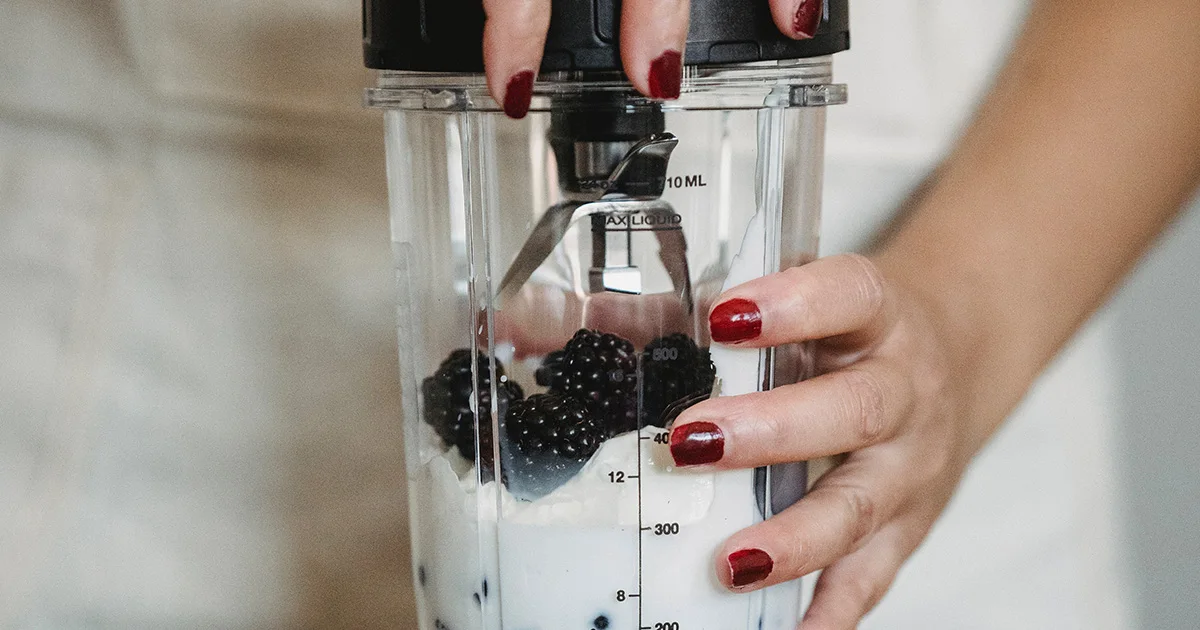Here's what we'll cover
Here's what we'll cover
Both Victoza (generic name: liraglutide) and insulin can treat diabetes. However, Victoza is not insulin. It is an injectable medication that people with type 2 diabetes mellitus use once daily to lower blood sugar levels.
What class of drug is Victoza?
Victoza is a glucagon-like peptide-1 (GLP-1) receptor agonist. GLP-1 receptor agonists are non-insulin medications that treat type 2 diabetes by lowering blood sugar levels. GLP-1 receptor agonists like liraglutide may also regulate appetite, lead to weight loss, and reduce certain cardiovascular risks in people with type 2 diabetes (such as lowering blood pressure and cholesterol) (Mehta, 2017; Collins, 2021). In a clinical trial funded by Novo Nordisk, the manufacturers of Victoza, people with type 2 diabetes were less likely to die from a cardiovascular cause (like a heart attack or stroke) after taking liraglutide (Marso, 2016).
Other GLP-1 receptor agonists include semaglutide (Ozempic, see Important Safety Information; Rybelsus), exenatide (Byetta, Bydureon), and dulaglutide (Trulicity).
Animal studies have shown that using GLP-1 receptor agonists like Victoza increases the risk of thyroid cancer in mice and rats. While it is not known if these drugs have the same effects in humans, the FDA has issued a serious black box warning for them. People who are pregnant or who have a personal or family history of medullary thyroid carcinoma (MTC) or multiple endocrine neoplasia syndrome type 2 (MEN 2) should not use Victoza (FDA, 2020; Collins, 2021).
What is the difference between insulin and Victoza?
Both insulin and Victoza treat diabetes. However, they are not the same thing. Insulin is a hormone your pancreas produces to control the amount of sugar in your bloodstream, while Victoza directs your body to release more insulin when needed. Insulin is available in needles, pens, pumps, and inhalers, while Victoza is only available as a prescription pen (Thota, 2022; Mehta, 2017).
When someone has diabetes, their body either doesn’t produce enough insulin, as with type 1 diabetes, or it loses its ability to use insulin, as with type 2 diabetes. Either way, the body has difficulty maintaining blood glucose levels within a healthy range. Insulin is the primary therapy for people with type 1 diabetes and the later stages of type 2 diabetes. In the early stages of type 2 diabetes, however, lifestyle interventions like diet and exercise, along with antidiabetes medications like Victoza injections and oral metformin, can treat it (Goyal, 2022; Thota, 2022). Victoza is not used to treat type 1 diabetes mellitus (FDA, 2020).
How does Victoza work?
As a GLP-1 receptor agonist, Victoza works by—you guessed it—activating your body’s GLP-1 receptors. GLP-1 is a hormone that your body releases when you eat, as a precursor to insulin. GLP-1 receptor agonists like Victoza work by mimicking the GLP-1 hormone and encouraging the release of more insulin, which brings blood sugar levels back down after eating. At the same time, Victoza works by preventing the release of additional glucose (sugar) from your liver into the bloodstream. Finally, Victoza slows down digestion and gastric emptying (how quickly your stomach empties). As a result, you feel full for a more extended period, so you may have less appetite, eat less food, and lose weight (Mehta, 2017; Collins, 2021).
Victoza comes in a prescription pen prefilled with a single dose of the drug, either 0.6 mg, 1.2 mg, or 1.8 mg. To use Victoza, you inject it daily into your stomach, thigh, or upper arm. Victoza should be injected subcutaneously (under the skin), at the same time of day, with or without meals (FDA, 2020).
When you use Victoza, healthcare professionals typically recommend a starting dose, which may be lower than the dose you eventually work up to. Within a few weeks, your dosage may increase, and you should start to see results (FDA, 2020).
How long can you stay on Victoza?
You can stay on Victoza for as long as your healthcare provider recommends. There is no official time limit for using Victoza. Rather, it is based on how well you tolerate the side effects and whether you continue to see health benefits. In one clinical trial, 16% of people dropped out due to Victoza’s side effects. However, the side effects are usually worse in the beginning. In the same trial, 20% of people reported side effects during the first four months. By 20 months, only 2% of people reported side effects (Ponzani, 2013).
Common side effects are gastrointestinal and may include nausea, diarrhea, vomiting, indigestion, and constipation. Other reported side effects of Victoza include headache and decreased appetite (FDA, 2020; Mehta, 2017). Side effects typically lessen with time and are most frequent during the first month of taking Victoza (Mehta, 2017). Serious side effects of Victoza include (FDA, 2020; Collins, 2021):
Allergic reaction to the ingredients in Victoza
Pancreatitis (inflammation of the pancreas)
Hypoglycemia (low blood sugar)
Acute kidney failure
Acute gallbladder disease
For those who can tolerate the side effects, studies have found that Victoza continues to provide benefits for people with type 2 diabetes, with or without obesity, who take the drug long-term. At a two-year follow-up, people using the Victoza pen experienced sustained improvements in their blood glucose levels, body weight, blood pressure, and cholesterol (Ponzani, 2013). A five-year follow-up from a separate study found similar long-term benefits in relation to weight management and glycemic control (Mirabelli, 2019).
Can you take Victoza injections for weight loss?
The FDA only approves Victoza to treat type 2 diabetes in people aged 10 or older. It also helps reduce the risk of experiencing a cardiovascular event, such as a heart attack or stroke, in people with type 2 diabetes and heart disease (FDA, 2020; Tamborlane, 2019).
Using Victoza can lead to weight loss. In clinical trials, most people will lose at least 5% of their body weight within a year, around 9 to 13 pounds on average, with some people losing more than 10% of their body weight (Mehta, 2017; Pi-Sunyer, 2015). However, Victoza is not approved for weight loss by the FDA. Because liraglutide—the active ingredient in Victoza—also supports weight loss, the makers of Victoza developed another version of liraglutide specifically for weight loss. This weight loss drug, known as Saxenda, is intended for people with obesity (BMI of 30 or higher) or who have overweight (BMI of 27 or higher) and a weight-related medical condition (Mehta, 2017).
Talk to your healthcare provider if you are interested in learning more about the diabetes medication Victoza. Be sure to tell them about your personal and family medical history, as well as any medications or supplements you are currently taking, to avoid any drug interactions.
Saxenda Important Safety Information: Read more about serious warnings and safety info.
DISCLAIMER
If you have any medical questions or concerns, please talk to your healthcare provider. The articles on Health Guide are underpinned by peer-reviewed research and information drawn from medical societies and governmental agencies. However, they are not a substitute for professional medical advice, diagnosis, or treatment.
Collins, L. & Costello, R. A. (2021). Glucagon-like peptide-1 receptor agonists. StatPearls . Retrieved on Jul. 30, 2022 from https://www.ncbi.nlm.nih.gov/books/NBK551568/
Goyal, R. & Jialal, I. (2022). Diabetes mellitus type 2. StatPearls . Retrieved on Jul. 30, 2022, from https://www.ncbi.nlm.nih.gov/books/NBK513253/
Marso, S. P., Daniels, G. H., Brown-Frandsen, K., et al. (2016). Liraglutide and cardiovascular outcomes in type 2 diabetes. The New England Journal of Medicine , 375 (4), 311–322. doi:10.1056/NEJMoa1603827. Retrieved from https://pubmed.ncbi.nlm.nih.gov/27295427/
Mehta, A., Marso, S. P., & Neeland, I. J. (2017). Liraglutide for weight management: a critical review of the evidence. Obesity Science & Practice , 3 (1), 3–14. doi:10.1002/osp4.84. Retrieved from https://pubmed.ncbi.nlm.nih.gov/28392927/
Mirabelli, M., Chiefari, E., Caroleo, P., et al. (2019). Long-term effectiveness of liraglutide for weight management and glycemic control in type 2 diabetes. International Journal of Environmental Research and Public Health , 17 (1), 207. doi:10.3390/ijerph17010207. Retrieved from https://pubmed.ncbi.nlm.nih.gov/31892206/
Pi-Sunyer, X., Astrup, A., Fujioka, K., et al. (2015). A randomized, controlled trial of 3.0 mg of liraglutide in weight management. The New England Journal of Medicine , 373 (1), 11–22. doi:10.1056/NEJMoa1411892. Retrieved from https://pubmed.ncbi.nlm.nih.gov/26132939/
Ponzani, P. (2013). Long-term effectiveness and safety of liraglutide in clinical practice. Minerva Endocrinologica , 38 (1), 103–112. Retrieved from https://pubmed.ncbi.nlm.nih.gov/23435446/
Tamborlane, W. V., Barrientos-Pérez, M., Fainberg, U., et al. (2019). Liraglutide in children and adolescents with type 2 diabetes. The New England Journal of Medicine , 381 (7), 637–646. doi:10.1056/NEJMoa1903822. Retrieved from https://pubmed.ncbi.nlm.nih.gov/31034184/
Thota, S. & Akbar, A. (2022). Insulin. StatPearls. Retrieved on Jul. 30, 2022 from https://www.ncbi.nlm.nih.gov/books/NBK560688/
U.S. Food and Drug Administration (FDA). (2020). Victoza (liraglutide) injection, for subcutaneous use. Retrieved on Jul. 30, 2022 from https://www.accessdata.fda.gov/drugsatfda_docs/label/2020/022341s036lbl.pdf










